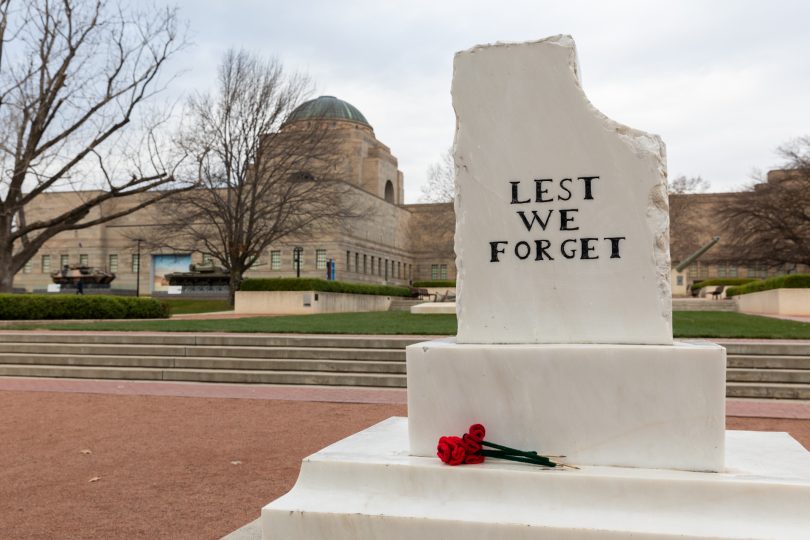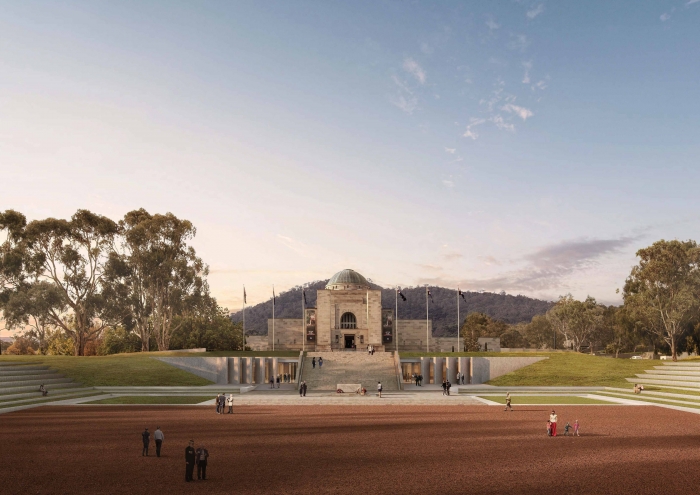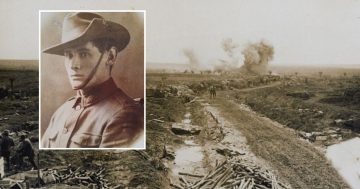
The Australian War Memorial. The NCA has approved early works, including the demolition of Anzac Hall. Photo: Michelle Kroll.
The National Capital Authority has approved early works to support the $500 million expansion of the Australian War Memorial, despite only three of the 601 submissions supporting the project.
The decision was met with a barrage of criticism from opponents who questioned whether the NCA was capable of doing its job properly.
But the Memorial said it was a welcome milestone and it looked forward to further community consultation through the NCA process for the Major Works designs to be released in the coming months.
The approved early works package was anticipated to commence by the end of this month, at the latest, it said.
In the end, the NCA’s only concern rested on the number of trees to be removed, and will require that the Memorial plant a minimum of 250 native trees as a condition of approval.
According to a landscape plan requested by the NCA, of the 595 existing trees within the AWM Precinct, 455 trees are to be retained, while 140 trees are to be removed as part of the project.
The full landscape plan describing the species and location will form part of the Public Realm works application submitted to the NCA in 2022.
“The NCA is satisfied this process will ensure the landscape qualities of the AWM site and the broader landscape setting of the national capital will be maintained and enhanced,” it said.
But it dismissed other concerns such as the demolition of the award-winning Anzac Hall, the impacts on heritage values, the need for the expansion, the early works being treated separately from the main works, the cost and a lack of proper consultation.
Heritage Guardians convenor David Stephens said the NCA had failed to meet its obligations to protect the national capital.
“The NCA, by waving this application through, has missed an opportunity to do something significant to protect the status of Canberra as the national capital,” he said.
“That is what its legislation says it is required to do. This project has always been grandiose, unnecessary and un-Australian. It is a monument to the desire of rich and powerful individuals to leave a legacy.”
The National Trust ACT said it was extremely disappointed at the decision, saying it came in the face of overwhelming public opposition.
President Gary Kent said the demolition of Anzac Hall only 20 years since its opening was a waste of public money and a significant loss to Canberra’s heritage.
“There are many other problems with the approval, including the removal of many mature trees which contribute to the quality of the Memorial’s setting and the impact on the premier axis of Canberra,” he said.
“The National Trust believes that national capital planning processes no longer protect the environmental and heritage values of Canberra.”

An artist’s impression of how the redeveloped War Memorial will look. Image: AWM
Mr Kent said the Commonwealth EPBC Act assessment and the NCA approvals were now often little more than rubber stamps, and the community had lost confidence in its ability to assess developments of this nature objectively.
“The Trust will be discussing a response with other with other stakeholders,” he said.
#HandsOffAnzacHall spokesperson and former National President of the Australian Institute of Architects, Clare Cousins, said the decision was a precedent that endangered every other piece of public architecture in the country.
“Australia’s regulatory framework has failed Australians at every step of this abomination of an ‘assessment’ process,” she said.
“Supposedly ‘independent’ decisionmakers have been shown to be nothing more than toothless tigers dancing to the tune of their political masters.
“Expert advice on the significant negative heritage impacts to the AWM from demolishing Anzac Hall, as well as widespread community opposition, have been equally ignored.
“The Environment Minister, the Parliamentary Public Works Committee and now the NCA have together created an abysmal precedent.”
President of the Medical Association for Prevention of War (Australia) Dr Sue Wareham said the consultation process had been a sham from start to finish.
“With the ‘early works’ approved and the AWM reduced to a building site, the next step will be for the NCA to decide whether rebuilding should occur. One could not imagine a more ludicrous situation,” she said.
Dr Wareham attacked the speed at which the 601 submissions were assessed and a decision made.
“From our communication with the NCA, we understand that the Authority was struggling to properly handle such a large number of submissions, but within a very short space of time, a decision has been made,” she said.
“This is a very sad day for Australia. This decision must be reversed, and the NCA reformed so that it reflects the views of the Australian people whom it is meant to represent.”
The ACT Greens called the decision outrageous and anti-democratic, and the consultation process a farce.
The NCA said it was not its place to decide many of the concerns raised, such as the need for or the cost of the redevelopment and deferred to the earlier EPBC approvals.
On the demolition of Anzac Hall, it noted that the AWM had discharged its legal obligations and that the replacement building proposed had been designed by a highly regarded Australian architectural practice with a reputation for design excellence in public buildings.
It relied on the EPBC finding that demolition was not considered to have an unacceptable impact on the heritage values of the AWM.
The War Memorial has argued that it needs to expand so it can adequately tell the stories of contemporary conflicts and missions.
But opponents have baulked at the cost and what they see as a distortion of the Memorial’s original mission.
Original Article published by Ian Bushnell on The RiotACT.










